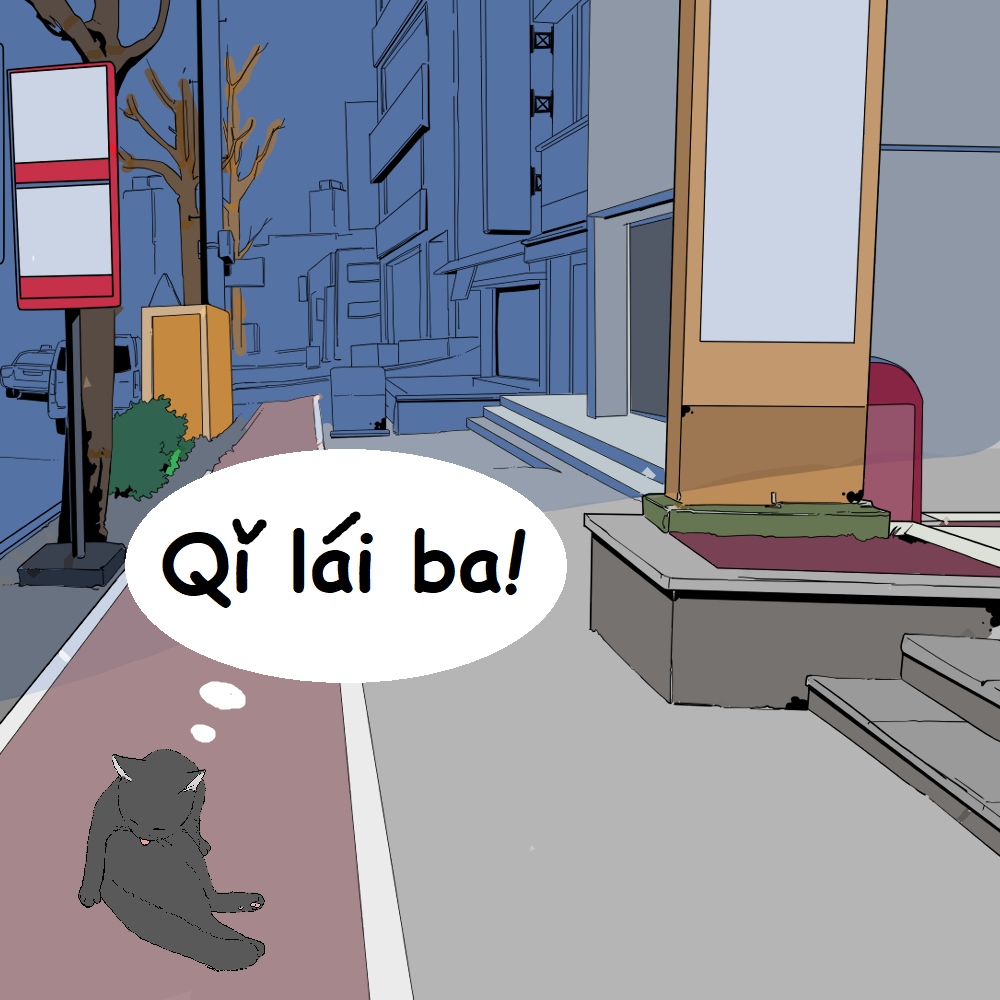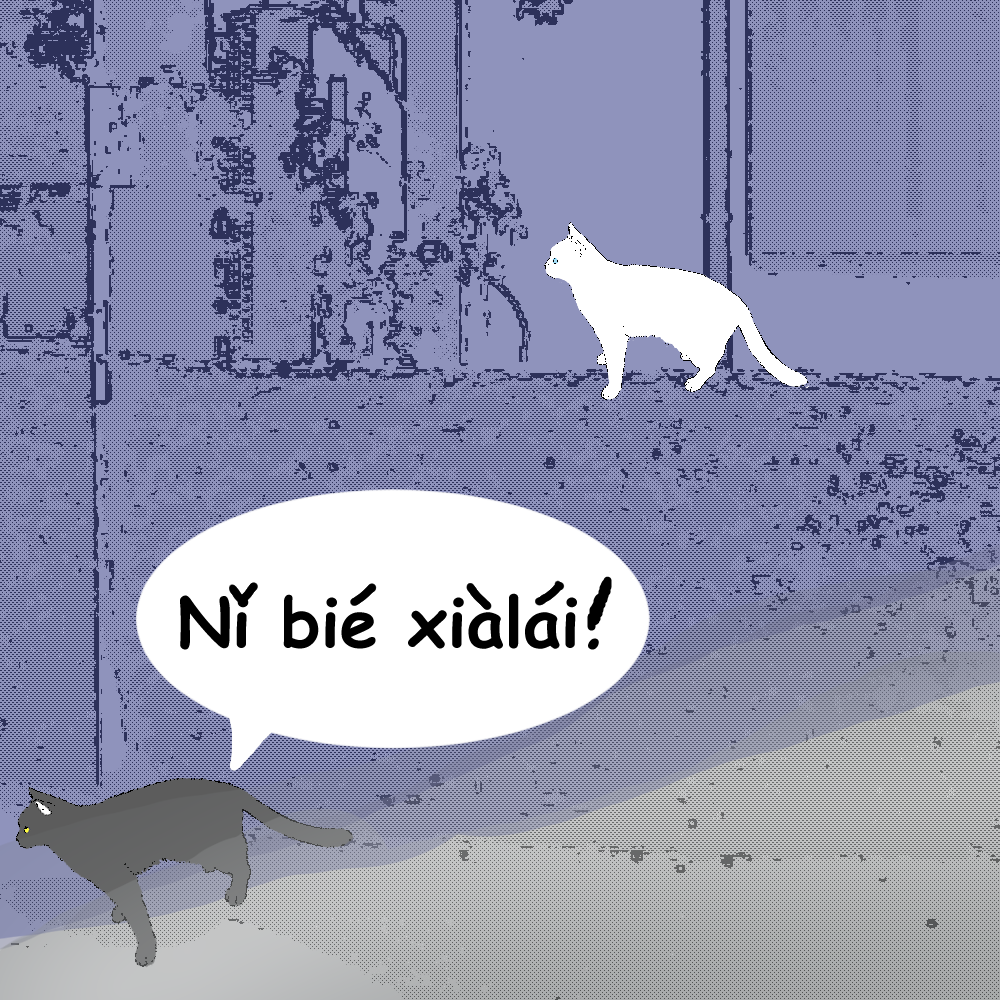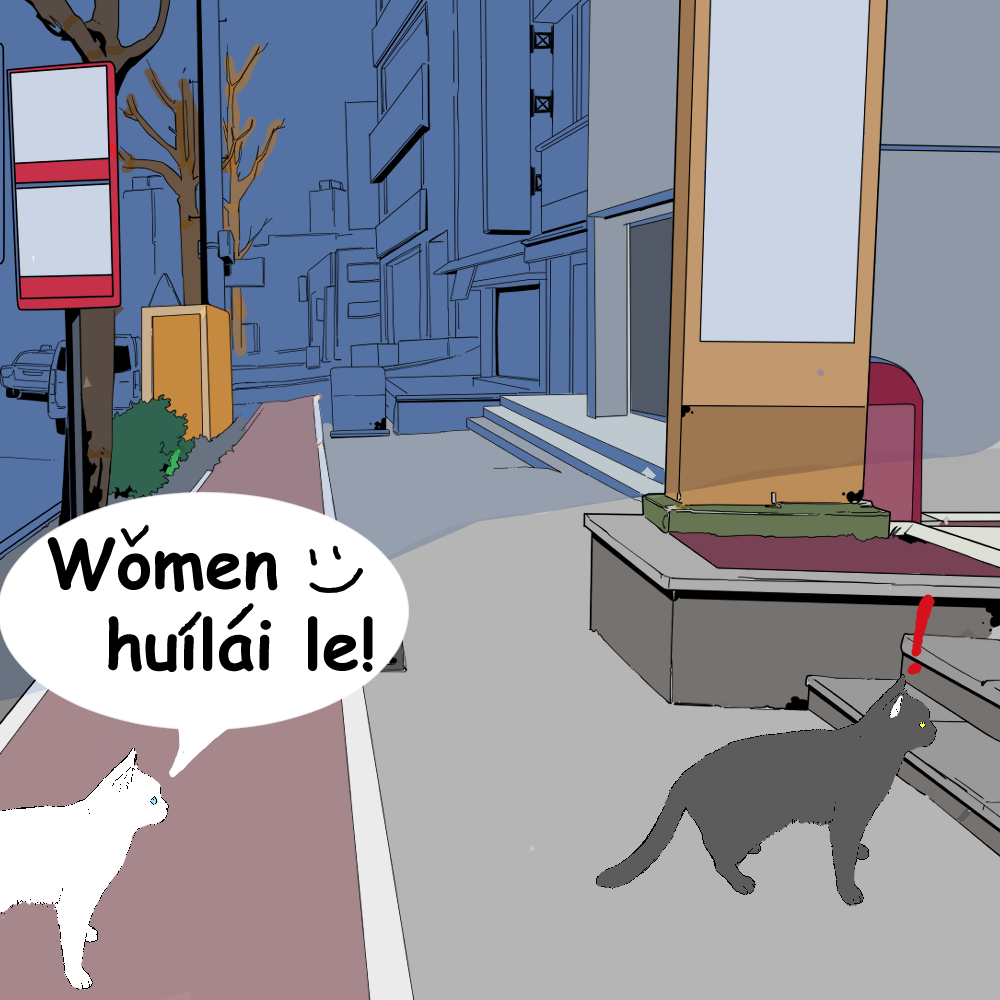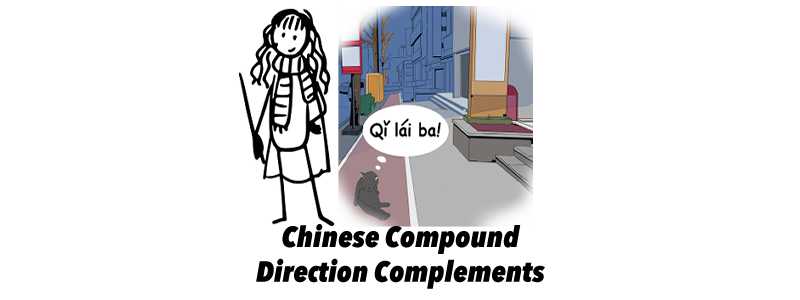Before we discuss the compound direction complements, it’s important to ensure that you have a good understanding of all the basic direction complements. Otherwise, you may have difficulty following this article.
What is compound direction complement?
A Chinese compound directional complement is formed by combining two or more basic directional words to express more specific movement or direction. One common pattern is:
👉 Direction + 来 lái / 去 qù
This structure helps indicate the direction of movement relative to the speaker’s position.
Use 去 qù if the action is moving away from the speaker.
Use lái if the action is moving toward the speaker.
| 上 shàng | 下 xià | 进 jìn | 出 chū | 回 huí | 过 guò | 起 qǐ | |
| 来 lái | 上来 Come up | 下来 Come down | 进来 Come in | 出来 Come out | 回来 Come back | 过来 Come over | 起来 Get up/rise |
| 去 qù | 上去 Go up | 下去 Go down | 进去 Go in | 出去 Go out | 回去 Go back | 过去 Go over |
When to use it?
Compound direction complements are often used with verbs that involve moving objects, such as 搬 bān for moving, 放 fàng for placing or carrying, 拿 ná for taking, and 开 kāi for driving, as well as body movements like 走 zǒu for walking and 跑 pǎo for running.
| Verbs | Direction verbs Complements | 来 lái or 去 qù | Meaning |
|---|---|---|---|
| 走 zǒu | 回 huí | 去 qù | walk back to there |
| 搬 bān | 出 chū | 来 lái | move out* |
| 搬 bān | 出 chū | 去 qù | move out* |
| 开 kāi | 过 guò | 来 lái | drive cross to here |
* Difference
搬出搬出
It simply means “to move out” or “to move something out”
搬出來搬出来
It implies that the speaker is focusing on the direction of the movement towards the speaker, as indicated by the use of 来 lái.
搬出去搬出去
The direction complement 去 qù which indicates movement away from the speaker.
Now let’s try to read a short story
A Pet Cat And A Stray Cat
Ah!There is one word I need to teach you before you watch it.
別 bié: It means do not do something.
別看我!别看我!
Don’t look at me!
And if you find the video speed too fast, you can slow it down by changing the speed…
Sentences in the Video

起來吧!起来吧!
(Time to) get up!
The function of 吧 ba here is a suggestion!
太陽升起來了太阳升起来了
The sun is up!
(It’s coming closer to the speaker so we need to use 来 lái)

你別下來你别下来
Don’t come down.
(If there’s a verb, the negation words are always placed in front of the verb, not the complement.)
你什麼時候爬上來?你什么时候爬上来?
When will you climb up?
(The speaker is at the top of the mountain, but the listener is at the bottom.)
我們一起爬下去吧!我们一起爬下去吧!
Let’s climb down together!
(Both the speaker and the listener are at the top of the mountain.)

How to add objects
Direction complements are not only used to describe the movement of people but also moving objects. But depending on where you place the direction complements and how you place them can make different functions.
V + Compound Direction Complement + O
This object needs to be a quantity noun phrase.
媽媽買回來一些水果妈妈买回来一些水果
Mom bought back some fruits.
我只還回去兩本書我只还回去两本书
I only returned two books.
V + Direction Complement + O + 來/去 (+Purpose)
The objects here can be a quantity noun phrase, a place word, or a thing. But it always implies there’s a purpose for why you are doing this action.
歡迎你搬回台北來欢迎你搬回台北来
Welcome to move back to Taipei
(Purpose: so we can hang out more often.)
我們一起爬下山去喝酒吧!我们一起爬下山去喝酒吧!
Let’s climb the mountain down together and go-to drink!
(Purpose: drinking.)
V + O + Compound Direction Complement
This object is usually known to both the speaker and the listener.
我們走中正路過去吧我们走中正路过去吧
Let’s go through the Zhōngzhèng road.
你搬外面的桌子進來了沒有?你搬外面的桌子进来了没有?
Did you move the outside table in?
This structure often combines with 把 bǎ structure, when the object is a thing.
你把外面的桌子搬進來了沒有?你把外面的桌子搬进来了没有?
Did you move the outside table in?
Summary
他從書包裡拿出來一本書他从书包里拿出来一本书
He took out a book from his book bag.
(A quantity noun phrase)
他從書包裡拿出一本書來(看)他从书包里拿出一本书来(看)
He took out a book from his book bag (to read.)
(Implies there’s a purpose)
他從書包裡拿了我的書出來他从书包里拿了我的书出来
He took my book out of the bag.
(Both the listener and speakers know about)


